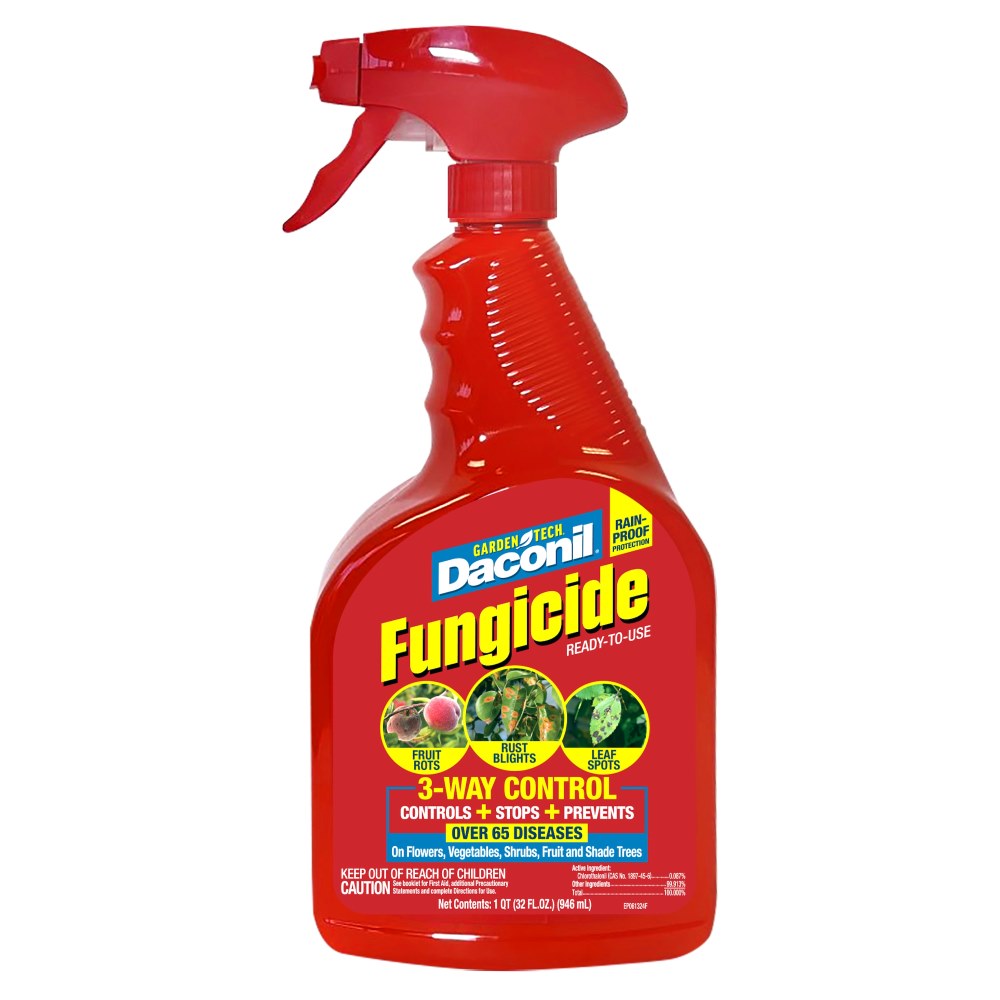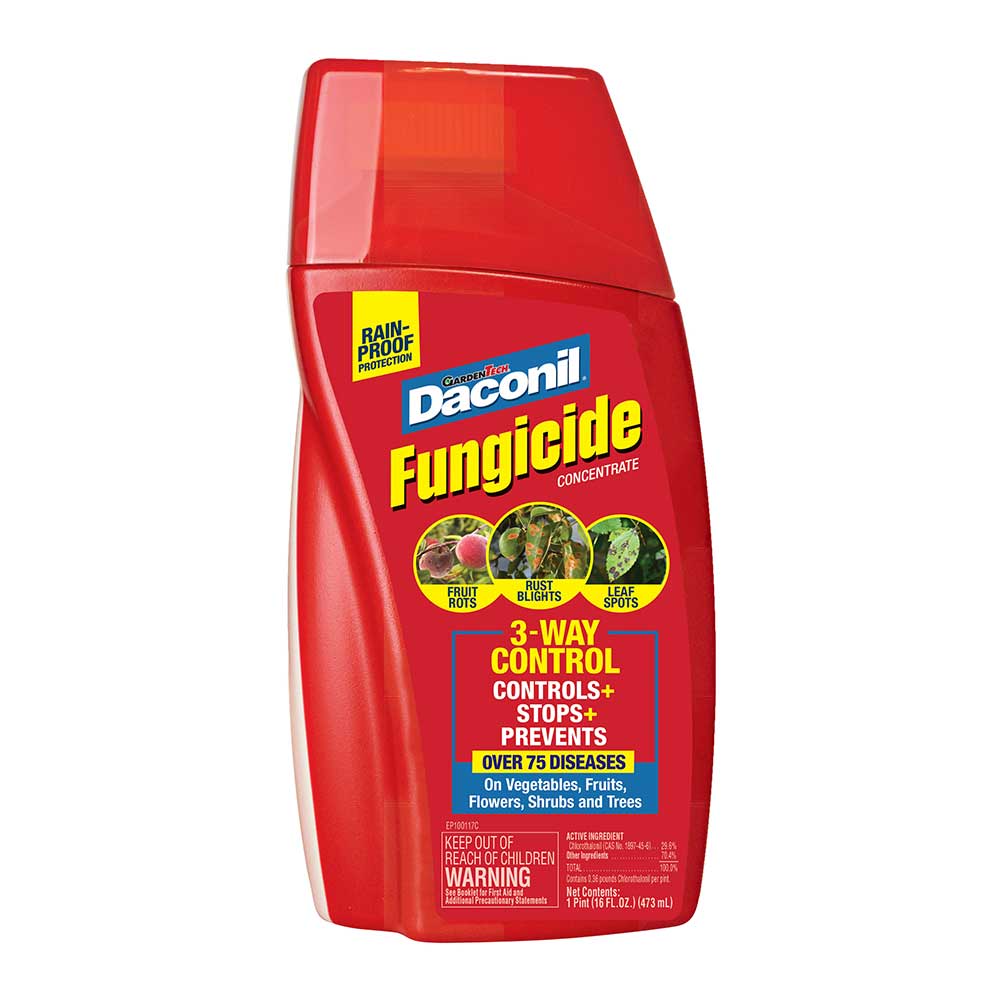Late Blight
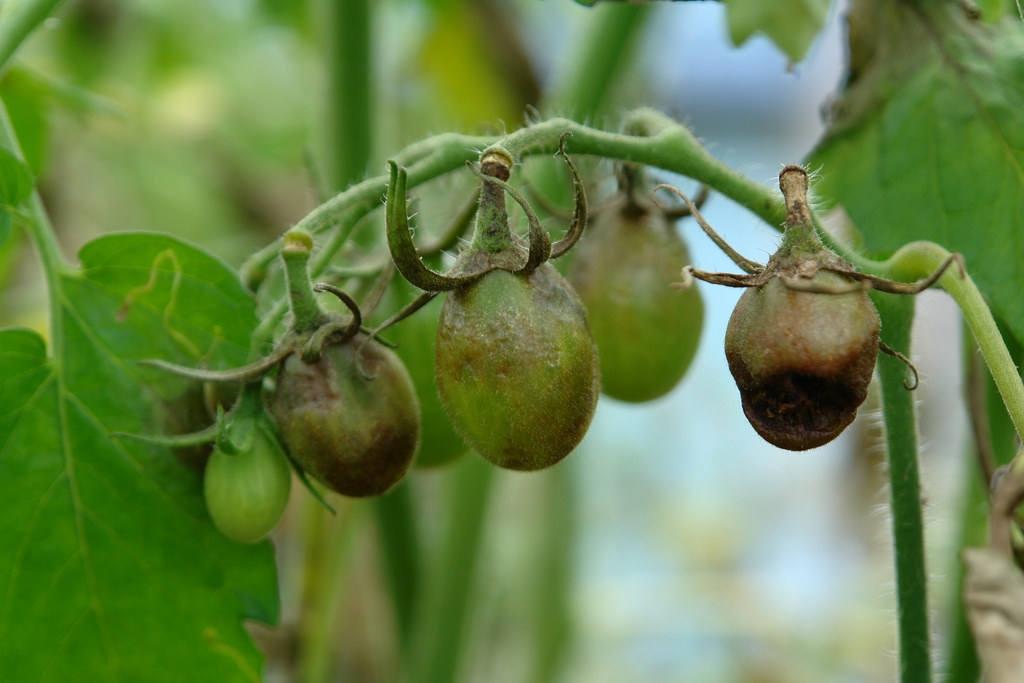

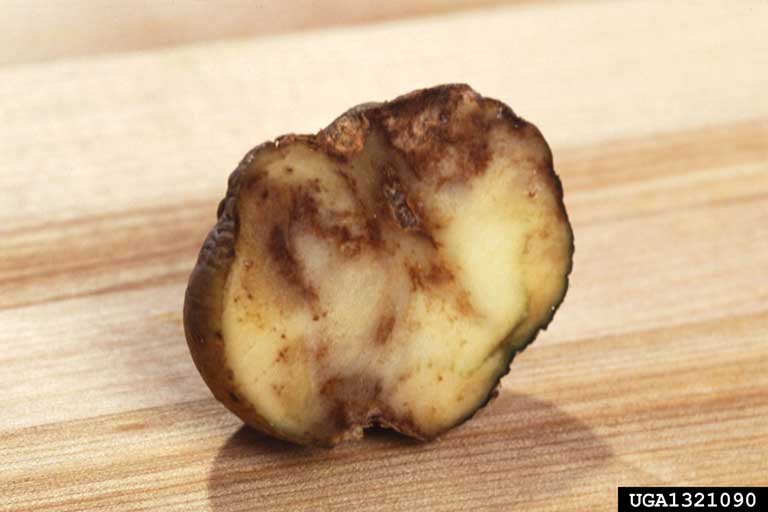
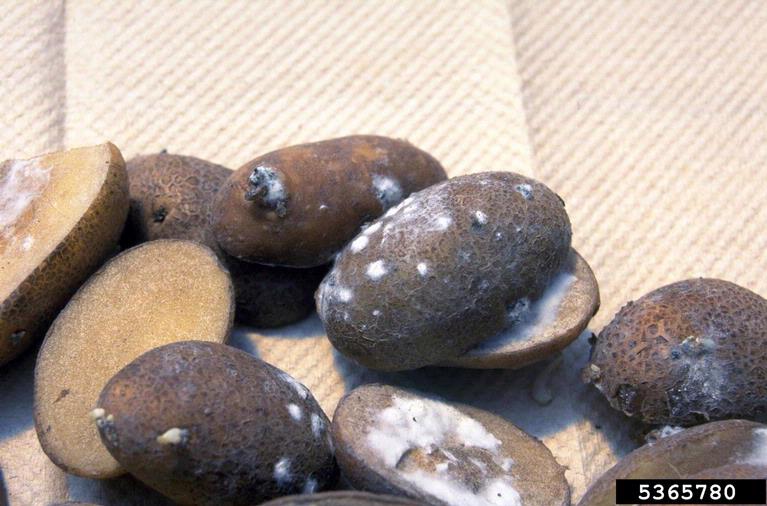
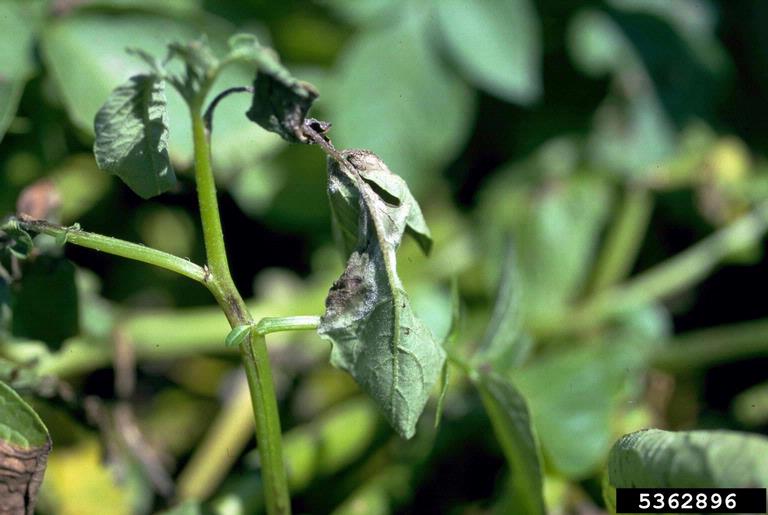
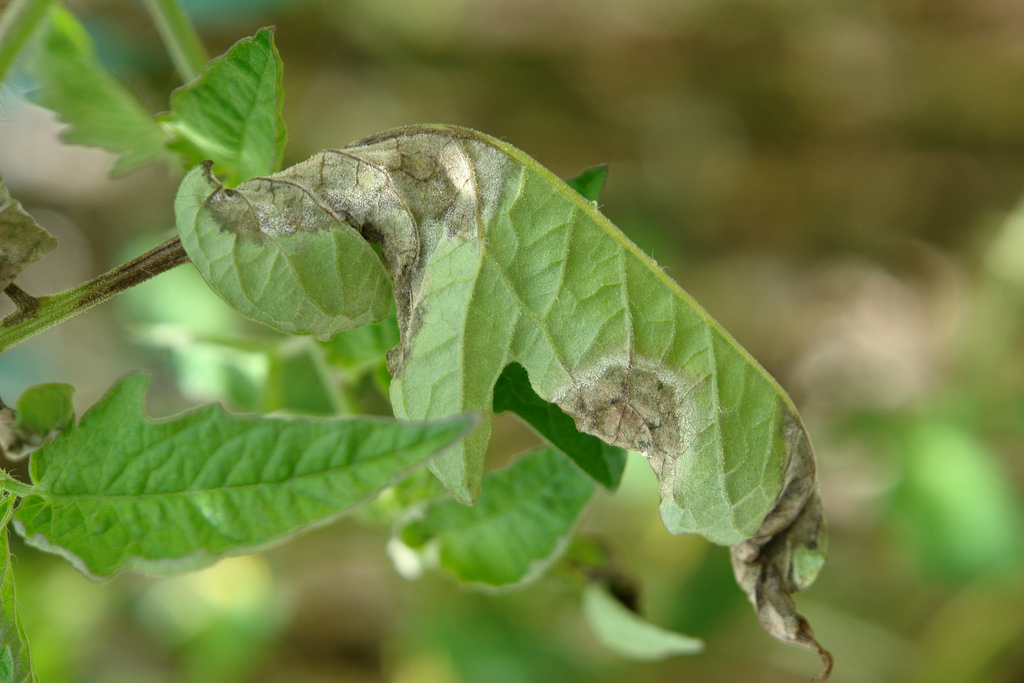
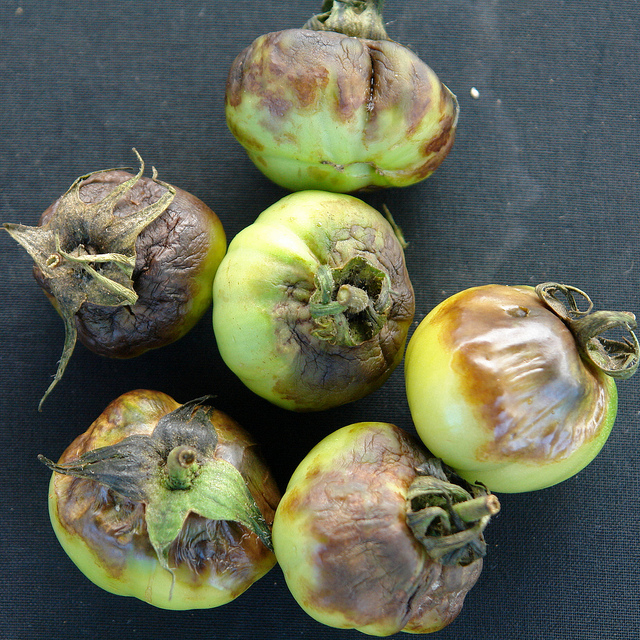
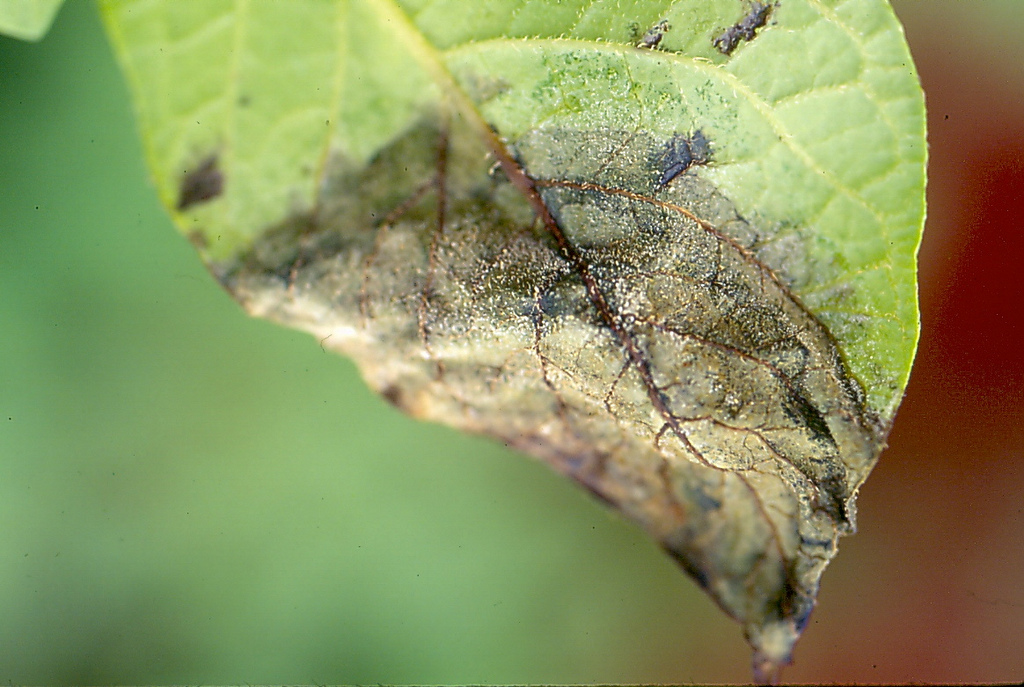
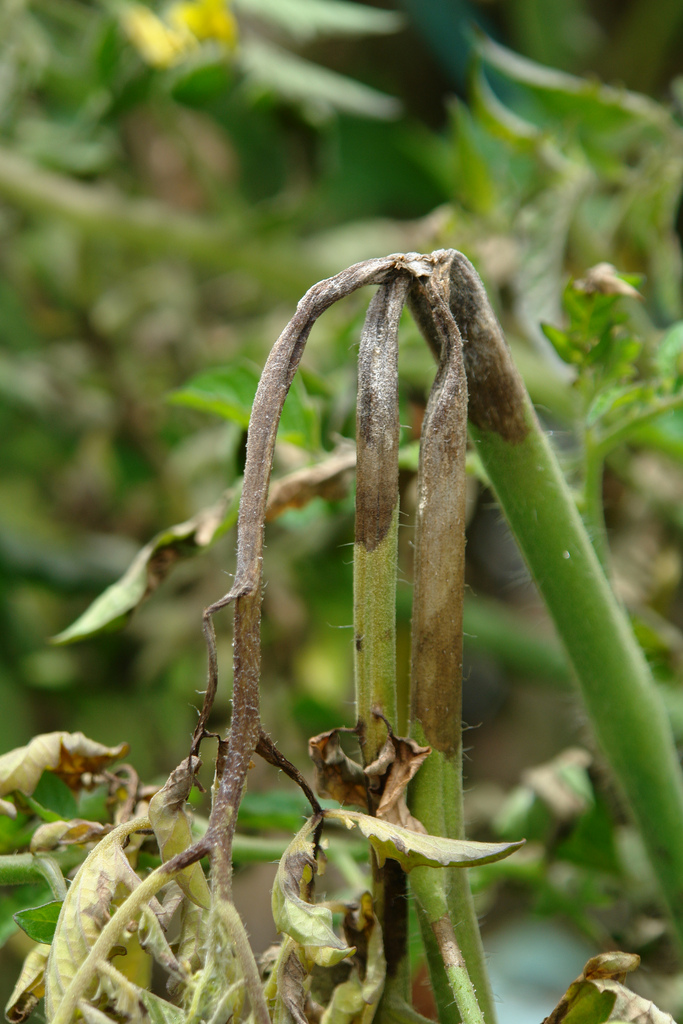
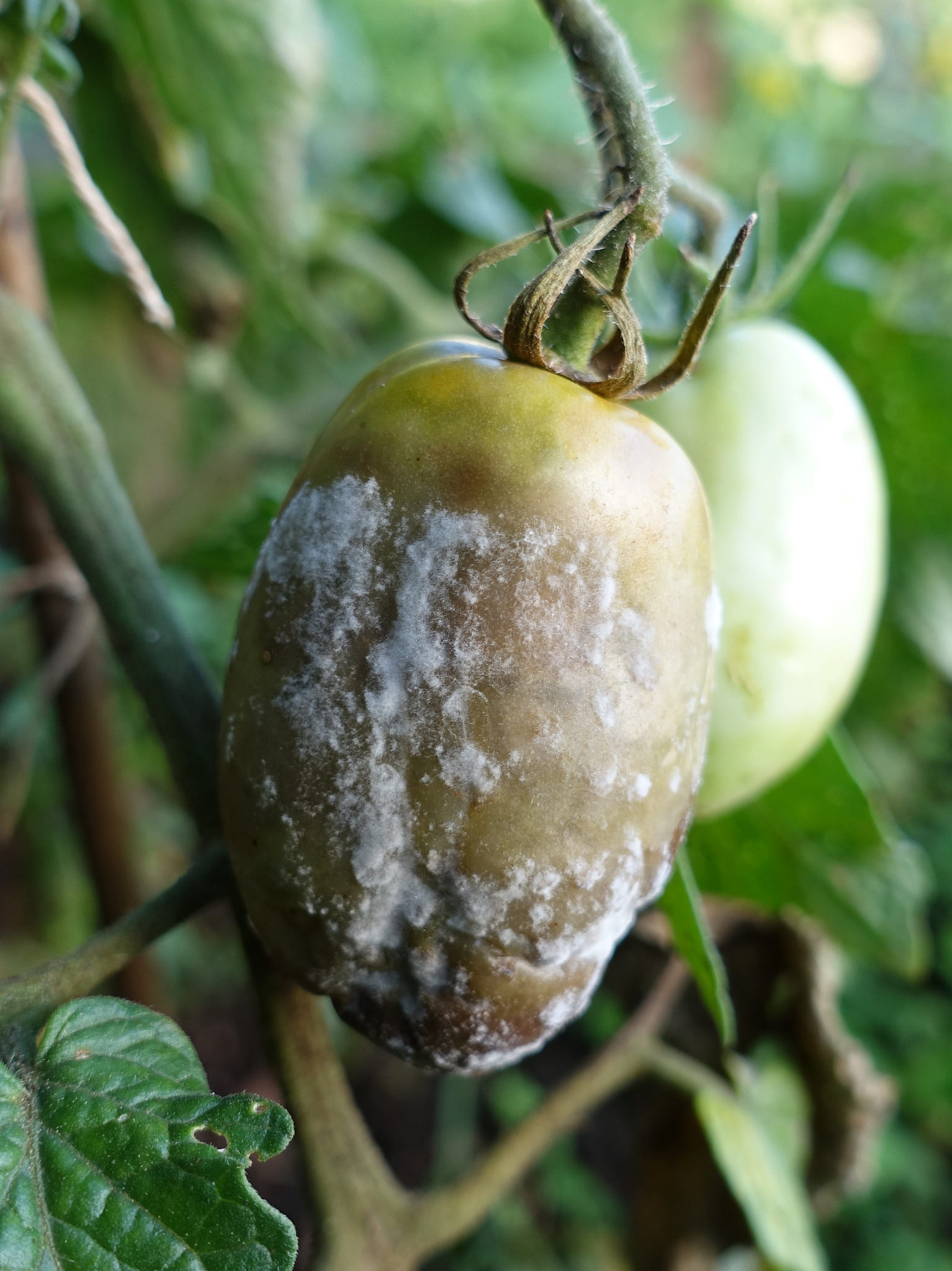
Late blight in tomatoes usually appears late in the season after plants have bloomed and fruit has set, but this devastating disease can hit any time in the growing season. Like other tomato blight diseases, late blight affects all members of the tomato family. This includes its close relative, the potato. In fact, late blight brought about the Irish potato famine of the mid-1800s.
Wet, humid weather combined with cool nights and warm days favors late blight. Pathogens in soil become airborne, sometimes traveling several miles in the wind. In tomatoes and potatoes, late blight spreads aggressively and affects all plant parts, including tomato fruits and potato tubers. Severe crop loss can result.
Late Blight Identification/Symptoms: The fungi behind late blight enter tomato and potato plants through the leaves. Early symptoms include greasy-looking, green-black patches on the upper surface of the lowest leaves. Tips of lower leaves, where dew collects and drips, show brown, dying leaf tissue ringed with pale green or yellow. When late blight infects stems, everything above the infection site dies.
Infected tomato fruits develop rough, leathery spots or dark, water-soaked areas that rot rapidly. Potato tubers bear dark, irregular spots on the surface and reddish-brown spots that extend down into the flesh. Decay continues after harvest.
In humid conditions, the undersides of late blight-affected leaves develop a thin layer of mildew that spreads to tomato fruit. Unlike gray mold disease, late blight causes white surface mold.
How to Control Late Blight: Early treatment is critical to controlling late blight disease. Preventive treatments can mean the difference between bountiful harvests and lost crops. Highly effective Daconil® fungicides from GardenTech® brand prevent, stop, and control late blight and more than 65 types of fungal disease.
For tomatoes, start treatments when conditions favor the disease. Then maintain control with applications every seven to 10 days. For potatoes, start at the first hint of disease or when plants reach six inches tall. Re-apply every five days to maintain control. These products treat tomatoes and potatoes right up to the day of harvest:
- Daconil® Fungicide Ready-To-Use provides a simple way to treat small garden areas, containers, or individual garden plants. Shake the grab-and-go bottle and spray all plant surfaces thoroughly. Give special attention to lower areas of the plant where moisture accumulates.
- Daconil® Fungicide Concentrate offers an economical alternative for larger gardens. The convenient measuring cap simplifies the mixing process. Use with a hand-held, hose-end or tank-style sprayer to cover all plant surfaces, upper and lower, until thoroughly wet.
Late Blight Tip: Late blight spreads between tomato family members and often overwinters on potatoes missed during harvest and left underground. Never plant tomato or potato plants where potatoes grew the previous year.
Always read product labels thoroughly and follow instructions, including guidelines for treatable plants, application rates and frequencies, and pre-harvest intervals (PHI) for edible crops.
GardenTech is a registered trademark of Gulfstream Home and Garden, Inc.
Daconil is a registered trademark of GB Biosciences Corp.
Photo Credit:
Howard F. Schwartz, Colorado State University, Bugwood.org (CC BY 3.0 US)
Scott Bauer, USDA Agricultural Research Service, Bugwood.org (CC BY 3.0 US)
G.D. Franc, Bugwood.org (CC BY 3.0 US)


